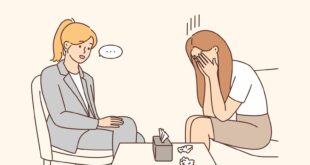Which technological device do you have at home or in your office?
A) Smart Phone
B) Desktop/Laptop
C) Tablet/Chromebook/iPad
D) All of the above
I can guarantee everyone reading this article can select at least option A. There’s even a huge percentage that can select option D. Technology makes our task easier and more convenient. They provide resources, stores documents and other information, offers a means of socializing and communicating, help us stay organize and keep appointments, provide entertainment, and even provide a paycheck. So, from the time we get out of bed until we get back in it—and sometimes even while in bed—we have a brightly lit screen shoved in our faces. Think about the effect all that light has on our eyes.
Blaring white light from any electronic device can be harmful to the eyes. According to WebMD, eye fatigue or eye strain is the result of activities that requires intense use of the eyes for extended periods such as driving or reading. But excessively staring at digital monitors is listed as the most common cause of eye strain, especially one called Computer Vision Syndrome (CVS). This encompasses a wide variety of eye related pain and discomfort by computer users.
CVS is not partial to adults, but it also affect teens and children who spend hours staring at portable video games, television, phone, and computer screens. It takes a lot of effort from the eye muscles to stay focus in one position for a long time or to be constantly moving back and forth. In extreme conditions, like poor or excess light when the monitor is too close to the face, the eye goes into over drive. Overtime eye problems tend to affect work performance and the overall health of our eyes.
Signs of eye strain or CVS includes
- Dry, red, or itchy eyes
- Blurred or double vision
- Headaches
- Neck, shoulder, or back pain
By now the eager question being ask is, “What can we do to prevent or make these sore eyes better?” Incorporating simple changes into our everyday lives may help to improve the condition of our eyes.
Practice the 20-20-20 Rule
Every 20 minutes, look approximately 20 feet away , for 20 seconds.
Adjust the settings
We don’t have to stick with the fresh-out-of-box features of our digital devices. We can tweak the brightness, contrast, and font size until our eyes approve.
Reduce glare
Our surrounding plays a part in making or breaking eye strain/CVS. Probably a nearby window is casting a glare on the monitor, or there is a very bright overhead or table light. Adjusting these things will greatly assist, as well as adjusting the screens of our laptops or monitors.
Step back
Especially with laptop that has the tendency to be right in our laps, its easy to disregard “personal space” when it comes to portable devices. Always aim to keep these devices 20-26 inches away from the eyes.
Blink!
It’s normal to blink less when using a digital device. This means that the eyes won’t get to recover and rehydrate as much. So, consciously make an effort to blink more.
If eye discomfort persist after applying these changes, visit a doctor. There may be an underlining cause.
“The eye is the lamp of the body. If your eyes are healthy, your whole body will be full of light.” (Matthew 6:22)
Source: WebMD
 The Bottom Line, Ministries Christian News, Articles, & Poetry
The Bottom Line, Ministries Christian News, Articles, & Poetry 





Wonderful article!
I work on a computer all day long, it can be hard on the eyes.
Thank you Lindsey…
I can definitely say amen to that!